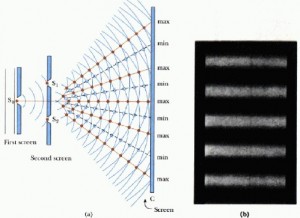Mathematician: From time to time, people like asking us questions such as “Why?”, while steadfastly refusing to explain what the heck they are talking about. The best example of this was a naked guy who approached our “Ask a Mathematician / Ask a Physicist” booth at Burning Man. In an attempt to respect everyone’s right to not explain themselves, we’ll make a series of guesses about what those folks might be trying to get at, and briefly respond to each of these possible questions.
1. “Why do we exist?”
Mathematician: We exist because our ancestors were at least slightly better at passing down their genetic material than other people. If the environment of earth happened to be just a tad bit different, then other genes besides our own would have been favored, and we would not be here today. If the environment had been a little more different still, then not only would we not be here, but the human species would not even be here. Some other creatures (possibly of great intelligence) would now be romping around this planet. In conclusion, we exist because the process of evolution works, because our planet happened to have the right conditions for evolution to begin, and because conditions changed over time such that human genes (and more specifically, our ancestor’s genes) happened to be favored for survival. We all got very, very lucky.
Physicist: If the many-worlds hypothesis holds (it totally does), then everything that’s possible happens in some version of the universe. If you can ask the question “Why do we exist?”, then you’ve already restricted your attention to the (possibly very small) set of universes where intelligent life exists. This argument is called the “anthropic principle“. So the reason we exist is because there is at least some vanishingly small chance that we could.
2. “Why does existence exist?”
Mathematician: Nobody knows. A related question that nobody knows the answer to is “why does consciousness exist?” For example, why aren’t we like computers, going about our business without ever “feeling” anything or having any “internal, personal experience”? There are a few possible answers to this question. Perhaps we don’t really have consciousness and we just think we do (though this answer strikes me as bullshit). Another possibility is that consciousness is something that emerges automatically (call this a property of the universe) when you have a sufficiently complicated system with the right components, and that we have consciousness merely because evolution happened to produce those special components in our brain (so in that case consciousness is a side effect of some useful brain parts). A third option is that consciousness was created by the process of evolution because it has a specific survival use (perhaps it is a handy way to get creatures to spread their genes).
Physicist: What else is existence going to do?
3. “Why is the universe the way it is?”
Mathematician: I consider this to be a deep mystery. According to an old Finnish creation story, the sky is a piece of an egg and the sun is its yolk, but this strikes me as unlikely. Perhaps physicists will one day be able to shed light on this question.
Physicist: If there’s some kind of rhyme or reason behind the beginning, then go figure out who was doing the reasoning and ask them. If, however, the universe was randomly generated, then it may follow the same rules for random generation that everything else in the universe does. The probability that a particle is generated is proportional to the number of states it can be in. So if an electron can be in two states and a pion can be in three, then the pion is 3/2 times more likely to be created than an electron. More states means more entropy. The universe may be the way it is because our particular set of physical constants (speed of light, gravitational constant, planck’s constant, etc.) cause the universe to have tremendous complexity (many many states). If the constants were different, then everything might have already fallen into black holes, or complex molecules may not form, or there may be no stars or solar systems, etc. Each of these circumstances have a much lower entropy than the universe we see today. So (perhaps) the universe is the way it is so that it can maximize it’s own entropy.
4. “Why are we the way we are?”
Mathematician: We have eyes because there is a Sun near our planet that is bouncing light off of everything, and it is mighty useful (for survival) to be aware of this radiation. It is so useful, in fact, that eyes have been created (from scratch) multiple times on the evolutionary tree. But why do we have two eyes, rather than one? In part, it probably serves as a back up system: since vision is so critical to survival on this planet, and since eyes can easily be pierced or go faulty, it’s much safer to have two. Another reason to have two eyes is because it allows us to have true 3D vision (which again, likely increases a creatures chance of survival). Why do we have arms and hands? Because our ancestors walked on four legs (which is useful for fast running, and our arms developed from these front legs) and manipulating the world around us is damn useful (thank you fingers!). Why do we have legs? Well, because that’s one of the best mechanisms that evolution found for getting around. These arguments can be repeated for most body parts. The point is that we are the way we are because the environment of earth during our evolution made the traits that we have useful for survival. We could have been very different had conditions been a little different, but things like eyes and legs are so incredibly useful that it is very likely we would have at least had those.
Physicist: Evolution favors what works. Things that work, and have thus evolved over and over in different places here on Earth, include: limbs, blood, eyeballs, nervous systems, sex, socializing, fighting and fleeing, eating and pooing, smelling, breathing, moving, not looking at the sun, … As for why we’re bipedal, hairless, and whatnot: sometimes these things happen. If you’ll notice, there aren’t a lot of other creatures that share these traits. If we were something else we’d wonder about that too.
5. “Why am I me and not someone else?”
Mathematician: Just chance, mostly, but you are also changing into a new person every moment, with new cells, new memories, new ideas and new behaviors.
Physicist: You’re no one at all before you’re born. Who you are now is who you’ve become.











